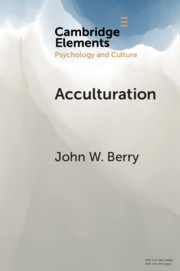Element contents
Acculturation
Published online by Cambridge University Press: 15 August 2019
Summary
Keywords
- Type
- Element
- Information
- Online ISBN: 9781108589666Publisher: Cambridge University PressPrint publication: 29 August 2019
References
- 41
- Cited by



